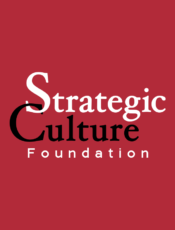While millions of Americans have suddenly become enlightened about the bleak plight of racial minorities in segregated inner-cities and impoverished suburbs, especially with the spate of police killings of unarmed blacks, for those of us who grew up in ghettoes and barrios, we are all too familiar with the rampant cases of police misconduct and government negligence.
As police chiefs, commissioners, prosecutors, politicians and media reporters commonly portray police killings of unarmed minorities as isolated cases, which go through self-serving inquiries by the same departments that employ the responsible parties, how much longer must historically disenfranchised groups need to wait before justice is served? It appears to me that when it comes to the prosecution and imprisonment of those guilty of crimes against racial minorities, which also includes negligent politicians and greedy business leaders, there’s no justice. At the end of the day, given the high incarceration rates and overall hopelessness of blacks and Latinos, there’s only “just us.”
In this country, we are taught from a young age that we must be responsible for our actions and pay the consequences, when we do something wrong. Thus, when no one is held accountable for the deadly and abusive behavior by the same people enlisted to “protect and to serve” the public, there comes a boiling point where those on the receiving end of injustice demand to be heard on the streets. This is not a new phenomenon. Fifty years ago, for example, before the disturbances in Baltimore, we had the Watts Riots. Over twenty years ago, before Ferguson blew up, we had the Los Angeles Riots. These are not isolated incidents, but collective expressions of despair and hopelessness found in marginalized communities that push blacks and Latinos to release their frustration through orderly and chaotic means.
While it’s politically convenient and false for the media and politicians to scapegoat the victims of racial segregation and government neglect by referring to Baltimore protestors as “thugs” and “criminals,” where even Baltimore Mayor Stephanie Rawlings-Blake and President Barack Obama, both African Americans and Democrats, use similar language, it’s more difficult and true to look at the root causes that led to the recent disturbances. Why don’t those in power also use these pejorative terms when describing the civic leaders, politicians, government officials and business leaders who played a major role during past century in creating impoverished ghettos and barrios through racist and anti-worker policies, such as race restrictive covenants, redlining, residential segregation, dysfunctional public schools, white flight and the exportation of manufacturing jobs to foreign countries? Isn’t this “thuggish” behavior at a massive and structural scale?
For me, this is not just a social policy or scholarly issue. It’s also personal. Long before I received my university degrees, allowing me to become a university professor, where I study cities and the disenfranchised groups who inhabit them, I was raised in East Los Angeles’ notorious housing projects.
Like many of my childhood friends, I was well aware that two gangs ruled the projects: the neighborhood gang and the police. While I never joined the gang—not because I felt morally superior, but because I lacked the necessary physical attributes to defend the barrio—I never experienced abuse or pressure to join from them. This is mainly because we all attended elementary school together, played street ball and took different paths in our teens without any conflict. However, as for the police, I only experienced negative encounters. Growing up, in the eyes of the police and housing authority, it was clear to me that we—poor project kids—all looked alike and were up to no good.
While I became accustomed to being pulled over, frisked and questioned by the police in the projects, I never expected this harassment to follow me to UCLA, when I first enrolled as a freshman math major. Call me naïve, but I initially thought that by being one of the few Chicanos from the projects to pursue higher education, when most of my childhood friends were dropping out of high school or serving time in the penitentiary, I would escape police harassment. Instead, as a then 17 year-old kid, I learned the hard way that racism would follow me to Westwood and will always be a part of my life with or without my doctoral degree from UC Berkeley.
Moving forward, American leaders must stop blaming the victims of an unequal society, where government seeks superficial remedies for so-called isolated incidents. Instead, we must tackle the structural causes of inequality and create a more just society for all.
Dr. Alvaro Huerta, counterpunch.org








